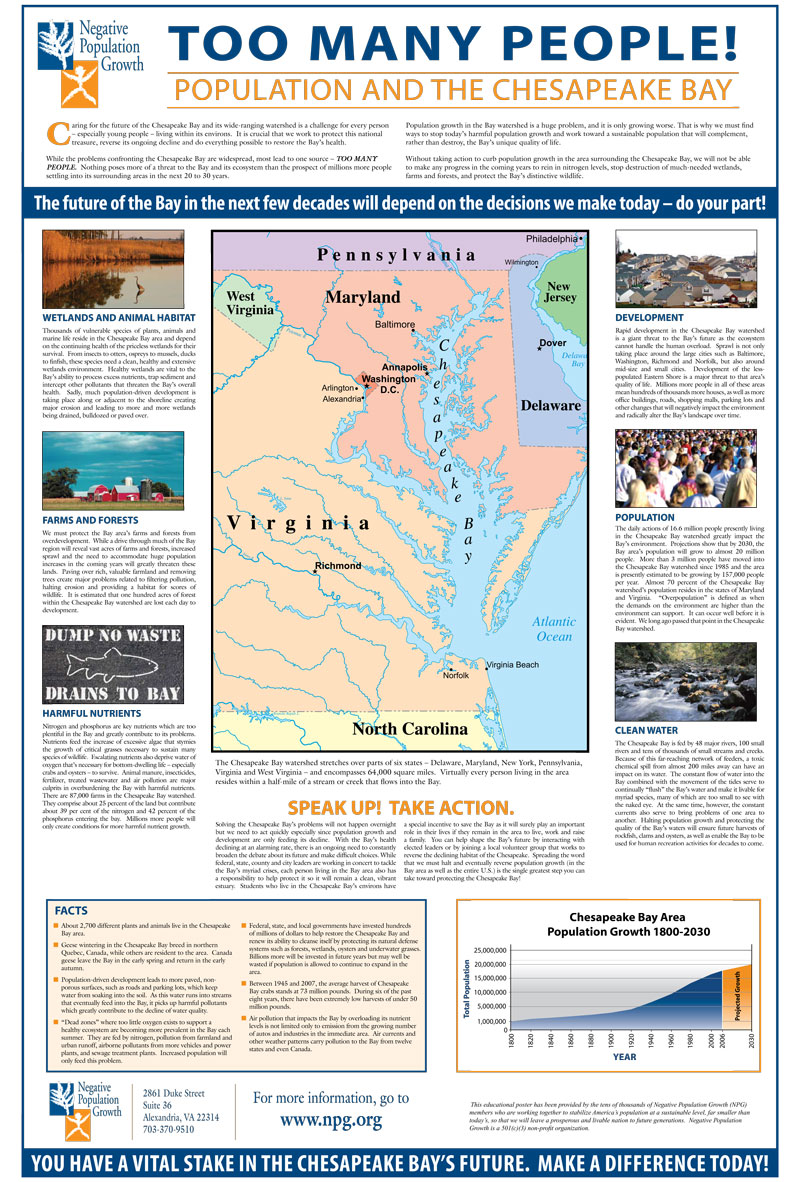The Chesapeake Bay May See New Federal Park and Heritage Area Designations
- NPG
- April 26, 2021
- NPG Commentary
- 0 Comments
April 27,2021
The Chesapeake Bay May See New Federal Park and Heritage Area Designations
Will Maryland Protect the Chesapeake Bay with New Designations?
The Chesapeake Bay is well-loved along the mid-Atlantic coast for its substantial natural beauty and array of recreational opportunities. It is also a significant economic resource for states connected by the watershed. Known to support more than 3,600 species of plant and animal life and fed by 50 major tributaries (streams and rivers), the Chesapeake Bay was formed 12,000 years ago when glaciers melted and flooded the Susquehanna River valley. Today, the Chesapeake Bay has made regional headlines at WTOP News because “The Maryland congressional delegation is pushing legislation to protect and enhance the natural resources throughout Southern Maryland and the Chesapeake Bay area with new federal park and heritage designations.”
“Marylanders know the Chesapeake Bay is a national treasure,” Democratic Senator Chris Van Hollen, one of the three Maryland officials working to move the project forward, noted. “Designating a Chesapeake National Recreation Area will highlight that reality – and bring national recognition to the importance of the Bay and its natural, cultural, historical, and recreational significance.”
He continued by saying, “This is also a unique chance to bring new resources to protecting the Bay and to generate new opportunities to grow Maryland tourism and outdoor recreation.”
As the nation’s largest estuary, work to highlight the area in significant ways (such as designating a new federal park, national recreation area, and or national heritage area) has been ongoing for decades. This most recent effort caught the attention of Chesapeake Conservancy President and CEO Joel Dunn, who said in a statement: “A Chesapeake National Recreation Area would be a land-based, 21st-century park, uniting new and existing National Park Service sites and trails, as well as partner parks, to increase public access to the Bay and to create a national park-worthy visitor experience for all to enjoy.”
NPG supports this effort to designate various areas within the Chesapeake Bay as a federal park, recreation area, or national heritage area. We must continue to work towards conservation, sustainable practices, and policies to ensure future generations can benefit from, observe, and enjoy the same natural resources and green spaces we have today. Revisiting the Chesapeake Bay, The Effect of Population Growth on America’s Largest Estuary, an NPG Forum paper, written by Tom Horton, focused on the environmental and economic importance of the Bay while also bringing into focus the importance of considering human numbers. Horton, a career journalist and author with a special emphasis on the Chesapeake Bay, wrote: “Our history of trying to restore the Chesapeake has been one of filling in the gaps of pollution – focusing first on sewage and factories, later on, the runoff from farms and paved surfaces, and then recognizing the role of dirty air falling on the watershed and realizing the cleansing, filtering value of trees, oysters, and wetlands. Human numbers and an economy built on their constant expansion is the missing link. Continuing to ignore growth renders most environmental progress in all other areas temporary. It mocks aspirations to live sustainably with the rest of nature and erodes our quality of life.”
NPG recently wrote to Senators Ben Cardin and Chris Van Hollen, as well as Maryland Representative John Sarbanes, asking them to include an open discussion of population size and growth in their recommendations to protect the Chesapeake Bay. They must recognize that if the population of this fragile area continues to grow their efforts will likely prove futile. A concerted effort to slow, halt, and eventually reverse population growth would be incredibly beneficial to the Chesapeake Bay – and to the rest of the country! Read the letter here.
To read more about America’s waterways, please see NPG’s forum paper Population Threats to America’s Rivers, Estuaries, and Lakes, Their Health and Future in the Face of Ever-Rising Population Numbers, by Christopher J. Daly, which takes a broader look at various water spots across the nation in correlation to population growth.
NPG also printed a large color poster on the Chesapeake Bay. The poster includes multiple images and facts. Click here to see an image of the poster. If you would like to order a free NPG Chesapeake Bay poster, click the button below.

